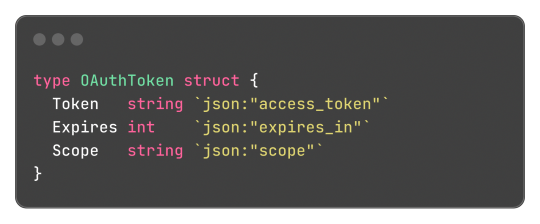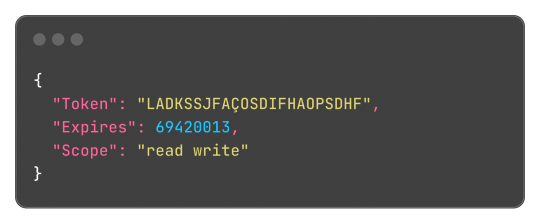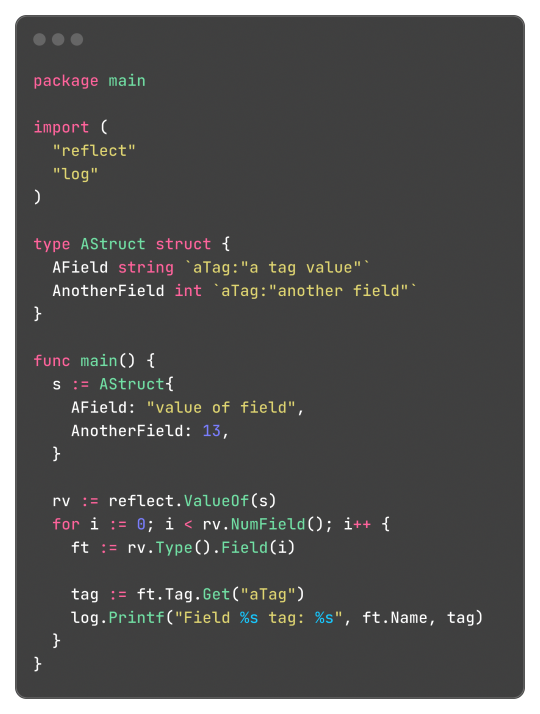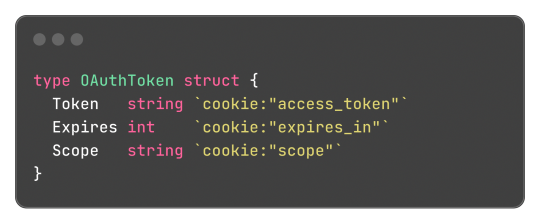#Golang Developer
Explore tagged Tumblr posts
Text
Jellyfish Technologies builds digital products and software. They offer many services like making software looking at data, working with clouds, updating old apps creating AI, and helping with DevOps. They've been around for more than 13 years and have 150+ experts on their team. So far, they've finished over 4000 projects. They work with different types of businesses such as healthcare, fintech, and retail, among others. People know Jellyfish Technologies for doing good work finishing projects on time, and keeping their clients happy. They come up with special solutions using the latest tech to help companies reach their digital goals.
Our developers specialize in cloud, DevOps, AI, and microservices—Hire Golang Developer to build scalable, high-performance applications with top-quality solutions. Get secure, cost-effective development with 24/7 support and industry-best practices. Hire today for optimized software solutions tailored to your business needs.
0 notes
Text
Decoding the Golang Developer’s Resume: What Every Recruiter Should Know
Decoding the Golang Developer's Resume: Essential Insights for Recruiters - Learn what to look for in a Golang developer's resume to make informed hiring decisions. Discover key skills, experiences, and qualifications that top candidates possess. Read more on Cerebraix.
0 notes
Text
Why use Golang for DevOps to streamline the continuous integration and deployment?
Google created the open-source programming language Golang. It is made to be straightforward, effective, and simple to use. Go's robust concurrency primitives and succinct syntax make it the perfect option for automating infrastructure and chores in a DevOps.
The integration of Golang for devops operations and software development has completely changed how businesses produce software and maintain their infrastructure. DevOps approaches facilitate faster deployment, increased scalability, and improved communication between development and operations through the automation of processes and infrastructure.
In this blog, We will discuss how Golang for devops can be leveraged to streamline continuous integration and deployment so, lets start with its advantage
The Golang Advantage For DevOps
Golang's design principles places on a premium on simplicity, concurrency, and performance are the core of its attractiveness for DevOps. Golang is a great option for accelerating CI/CD pipelines because of its simple syntax and effective handling of multiple processes at once. Golang's advantages become clear in the area of continuous integration, where speed is critical.
Building Reliable and Scalable Systems
Reliability and scalability are just as important to Golang for DevOps as speed. Static typing and effective garbage collection are two features of Golang that help build scalable and reliable systems. Because Golang can manage heavy traffic loads and provide dependable performance, many large enterprises have adopted it as a foundational technology for developing robust infrastructure.
Golang In CI Pipelines: Accelerating Build Processes
Golang functions as a catalyst for quicker build and test processes by integrating smoothly into continuous integration pipelines. Because of its static linking feature, there are fewer dependencies and consistency between environments is guaranteed. Faster feedback loops let developers iterate more quickly and identify any problems early in the development cycle..
Efficient Testing
CI/CD requires testing, and Golang has an integrated testing framework that makes the process easier. It is possible you can hire Golang developer to write tests in addition to their code, which encourages thorough testing. Applications are made more reliable by Golang's testing features, which make sure that modifications made to the codebase won't affect its stability.
Containerization and Orchestration
Golang has proven essential in the field of orchestration and containers. It is essential to the creation of container orchestration platforms like Kubernetes and containerization tools like Docker. Golang's performance advantages boost containerized apps' effectiveness and give enterprises confidence to adopt microservices architectures.
Go and it’s Infrastructure as Code (IaC)
Infrastructure as Code, or IaC, is a notion that has gained popularity as DevOps approaches expand. Golang is a useful tool for expressing infrastructure as code as it's an expressive and productive language. Infrastructure as a Service (IaC) techniques are supported by tools and frameworks in the Golang ecosystem, which make infrastructure provisioning and management more automated.
Successful case studies of Golang for Devops
Success stories from the real world demonstrate to Golang's effectiveness in DevOps processes. Businesses from a range of sectors have used Golang to expedite their CI/CD procedures. For example, after using Golang, [Company X] saw a 30% reduction in deployment times, indicating the real impact of the language on operational effectiveness.
Community Contributions To Open Source Tools for DevOps
The Golang community's collaborative spirit has produced a multitude of open-source tools to improve DevOps procedures. Contributions that assist the larger DevOps community are what keep the Golang ecosystem thriving, from CI/CD pipelines to monitoring and logging systems. This attitude of cooperation guarantees that DevOps professionals will have access to state-of-the-art tools that complement Golang's effectiveness.
Challenges and Best Practices To Navigating The Golang DevOps Landscape
Although there are many advantages to utilizing Golang for DevOps, adoption may present certain difficulties. It's critical to identify potential obstacles and provide best practices for getting beyond them. Understanding the intricacies is essential for optimizing the efficiency advantages, from ensuring a seamless transition for existing codebases to making the most of Golang's concurrency features.
Conclusion:
The collaboration of Golang with continuous integration and deployment is an efficient symphony in the fast-paced world of DevOps. Golang's impact can be seen throughout the whole software development lifecycle, from infrastructure as code and container orchestration to optimized continuous integration pipelines. Golang is a conductor, bringing simplicity, speed, and scalability together in a harmonious way to achieve DevOps excellence as companies strive for faster, more dependable deployments.
0 notes
Text



Definitely this counts as productive night of studies.
I arrived early, grabbed my seat, and dive into another incredible Golang SP event at Microsoft Reactor.
During the event, we discussed the simplicity of error handling in Go, which was practically reinforced by creating a CSV file parser, ensuring that any issues encountered are well identified and handled.
#coding#developer#linux#programmer#programming#software#software development#student#study aesthetic#study blog#studyblr#studyblr community#studyprogramming#swe#software engineering#softwareengineer#code#golang#notebook#laptop#event#codeevent#programmingevent#study motivation#studying#studynotes#brazil#brasil
35 notes
·
View notes
Text
Do You Want Some Cookies?
Doing the project-extrovert is being an interesting challenge. Since the scope of this project shrunk down a lot since the first idea, one of the main things I dropped is the use of a database, mostly to reduce any cost I would have with hosting one. So things like authentication needs to be fully client-side and/or client-stored. However, this is an application that doesn't rely on JavaScript, so how I can store in the client without it? Well, do you want some cookies?
Why Cookies
I never actually used cookies in one of my projects before, mostly because all of them used JavaScript (and a JS framework), so I could just store everything using the Web Storage API (mainly localstorage). But now, everything is server-driven, and any JavaScript that I will add to this project, is to enhance the experience, and shouldn't be necessary to use the application. So the only way to store something in the client, using the server, are Cookies.
TL;DR Of How Cookies Work
A cookie, in some sense or another, is just an HTTP Header that is sent every time the browser/client makes a request to the server. The server sends a Set-Cookie header on the first response, containing the value and optional "rules" for the cookie(s), which then the browser stores locally. After the cookie(s) is stored in the browser, on every subsequent request to the server, a Cookie header will be sent together, which then the server can read the values from.
Pretty much all websites use cookies some way or another, they're one of the first implementations of state/storage on the web, and every browser supports them pretty much. Also, fun note, because it was one of the first ways to know what user is accessing the website, it was also heavy abused by companies to track you on any website, the term "third-party cookie" comes from the fact that a cookie, without the proper rules or browser protection, can be [in summary] read from any server that the current websites calls. So things like advertising networks can set cookies on your browser to know and track your profile on the internet, without you even knowing or acknowledging. Nowadays, there are some regulations, primarily in Europe with the General Data Privacy Regulation (GDPR), that's why nowadays you always see the "We use Cookies" pop-up in websites you visit, which I beg you to actually click "Decline" or "More options" and remove any cookie labeled "Non-essential".
Small Challenges and Workarounds
But returning to the topic, using this simple standard wasn't so easy as I thought. The code itself isn't that difficult, and thankfully Go has an incredible standard library for handling HTTP requests and responses. The most difficult part was working around limitations and some security concerns.
Cookie Limitations
The main limitation that I stumbled was trying to have structured data in a cookie. JSON is pretty much the standard for storing and transferring structured data on the web, so that was my first go-to. However, as you may know, cookies can't use any of these characters: ( ) < > @ , ; : \ " / [ ] ? = { }. And well, when a JSON file looks {"like":"this"}, you can think that using JSON is pretty much impossible. Go's http.SetCookie function automatically strips " from the cookie's value, and the other characters can go in the Set-Cookie header, but can cause problems.
On my first try, I just noticed about the stripping of the " character (and not the other characters), so I needed to find a workaround. And after some thinking, I started to try implementing my own data structure format, I'm learning Go, and this could be an opportunity to also understand how Go's JSON parsing and how mostly struct tags works and try to implement something similar.
My idea was to make something similar to JSON in one way or another, and I ended up with:

Which, for reference, in JSON would be:

This format is something very easy to implement, just using strings.Split does most of the job of extracting the values and strings.Join to "encode" the values back. Yes, this isn't a "production ready" format or anything like that, but it is hacky and just a small fix for small amounts of structured data.
Go's Struct Tags
Go has an interesting and, to be honest, very clever feature called Struct Tags, which are a simple way to add metadata to Structs. They are simple strings that are added to each field and can contain key-value data:

Said metadata can be used by things such the encoding/json package to transform said struct into a JSON object with the correct field names:

Without said tags, the output JSON would be:

This works both for encoding and decoding the data, so the package can correctly map the JSON field "access_token" to the struct field "Token".
And well, these tokens aren't limited or some sort of special syntax, any key-value pair can be added and accessed by the reflect package, something like this:


Learning this feature and the reflect package itself, empowered me to do a very simple encoding and decoding of the format where:

Can be transformed into:

And that's what I did, and the [basic] implementation source code just has 150 lines of code, not counting the test file to be sure it worked. It works, and now I can store structured data in cookies.
Legacy in Less Than 3 Weeks
And today, I found that I can just use url.PathEscape, and it escapes all ( ) < > @ , ; : \ " / [ ] ? = { } characters, so it can be used both in URLs and, surprise, cookie values. Not only that, but something like base64.URLEncoding would also work just fine. You live, and you learn y'know, that's what I love about engineering.
Security Concerns and Refactoring Everything
Another thing that was a limitation and mostly worry about me, is storing access tokens on cookies. A cookie by default isn't that secure, and can be easily accessed by JavaScript and browser extensions, there are ways to block and secure cookies, but even then, you can just open the developer tools of the browser and see them easily. Even though the only way to something malicious end up happening with these tokens are if the actual client end up being compromised, which means the user has bigger problems than just a social media token being leaked, it's better to try preventing these issues nonetheless (and learn something new as always).
The encryption and decryption part isn't so difficult, Go already provides packages for encryption under the crypto module. So I just implemented an encryption that cyphers a string based on a key environment variable, which I will change every month or so to improve security even more.
Doing this encryption on every endpoint would be repetitive, so adding a middleware would be a solution. I already made a small abstraction over the default Go's router (the DefaultMuxServer struct), which I'm going to be honest, wasn't the best abstraction, since it deviated a lot from Go's default HTTP package conventions. This deviation also would difficult the implementation of a generic middleware that I could use in any route or even any function that handles HTTP requests, a refactor was needed. Refactoring made me end up rewriting a lot of code and simplifying a lot of the code from the project. All routes now are structs that implement the http.Handler interface, so I can use them outside the application router and test them if needed; The router ends up being just a helper for having all routes in a struct, instead of multiple mux.HandleFunc calls in a function, and also handles adding middlewares to all routes; Middlewares end up being just a struct that can return a wrapped HandlerFunc function, which the router calls using a custom/wrapped implementation of the http.ResponseWriter interface, so middlewares can actually modify the content and headers of the response. The refactor had 1148 lines added, and 524 removed, and simplified a lot of the code.
For the encryption middleware, it encrypts all cookie values that are set in the Set-Cookie header, and decrypts any incoming cookie. Also, the encrypted result is encoded to base64, so it can safely be set in the Set-Cookie header after being cyphered.
---
And that's what I worked in around these last three days, today being the one where I actually used all this functionality and actually implemented the OAuth2 process, using an interface and a default implementation that I can easily reimplement for some special cases like Mastodon's OAuth process (since the token and OAuth application needs to be created on each instance separately). It's being interesting learning Go and trying to be more effective and implement things the way the language wants. Everything is being very simple nonetheless, just needing to align my mind with the language mostly.
It has been a while since I wrote one of these long posts, and I remembered why, it takes hours to do, but it's worth the work I would say. Unfortunately I can't write these every day, but hopefully they will become more common, so I can log better the process of working on the projects. Also, for the 2 persons that read this blog, give me some feedback! I really would like to know if there's anything I could improve in the writing, anything that ended up being confusing, or even how I could write the image description for the code snippets, I'm not sure how to make them more accessible for screen reader users.
Nevertheless, completing this project will also help to make these post, since the conversion for Markdown to Tumblr's NPF in the web editor sucks ass, and I know I can do it better.
2 notes
·
View notes
Text
Hire Golang Developers: Elevate Your Software Development

Looking to build robust and high-performance applications? Hire Golang developers who excel in creating efficient, scalable, and reliable solutions. Discover the benefits of using Go, a language designed for concurrency and simplicity, and find the right talent to bring your project to life.
2 notes
·
View notes
Text
Unlike 99% of human languages, computer languages are designed. Many of them never catch on for real applications. So what makes a computer language successful? Here's one case study...
#software development#software engineering#golang#coding#artificial language#concurrency#google#programming languages#compiler#computing history#mascot#gophers
5 notes
·
View notes
Text
Making a compiler
Every programmer out there, new or experienced longs for a chance to create their own programming language and compiler. I am no exception. Months ago I decided to fork an old project on github and develop it in my image. The project was a golang-like unfinished compiler, so I dug in and made changes. I changed the language to resemble a subset of rust, go and ocaml. I plan to add a LLVM backend inspired by the tre golang compiler. I will continue working on it until it kinda works. I still have a lot to do. check out the project on the link below. If you want to contribute submit a pull request.
#golang#programming#rustlang#compiler#programming languages#c++#typescript#java#javascript#javaris x#java development company#javatpoint#software#developer#sql#open source#python
11 notes
·
View notes
Text
Hiring a Golang Developer vs. a Python Developer: Which Is Better for Your Startup?

Every choice you make when starting a business is crucial, but hiring the right staff and using the right technology are particularly important. Since backend development is the foundation of your product, choosing the appropriate language and developer is not just a technical but also a strategic decision.
Both Golang and Python have advantages over one another. However, one might be better suited for your needs based on speed, concurrency, simplicity, or scalability. This guide will assist you in making a decision based on the requirements of your startup if you are unsure whether to hire Python or Golang developers.
Speed vs. Flexibility: Choosing the Right Backend Language for Your Startup’s Success
Golang for Performance and Scalability
Google created Golang, commonly referred to as Go, to efficiently manage high-concurrency systems. Golang might be the best option for your firm if you're concentrating on creating performance-critical systems, such as streaming services, real-time APIs, or microservices.
Hiring Golang developers is an investment in speed. Because Go is statically typed and built, it executes more quickly and produces fewer runtime errors. Go is rapidly becoming the backend standard for tech businesses managing large-scale infrastructure or striving for cloud-native architecture.
Python for Flexibility and Rapid Development
In contrast, Python is the preferred language for automation, data science, artificial intelligence, and fast prototyping. It is easy for beginners to understand, legible, and backed by a vast library environment. Hiring Python developers makes sense if your firm has limited development resources or is focused on analytics or machine learning.
Python is a great choice for MVPs. You can quickly test features, iterate, and change course in response to user input. Although Python may not be as fast as Golang, many software companies find the flexibility it provides to be worth the trade-off.
Backend Talent: What to Prioritize
Evaluating their backend skills is crucial, regardless of whether you choose to work with Python specialists or Golang engineers. It is crucial to comprehend security protocols, database architecture, and API design. The way developers design and scale systems is just as important as syntax.
This is where when you hire backend developers they can address problems in any language. Before reducing their stack, some firms even hire multilingual developers to meet initial product demands.
Hiring Considerations for Startups
Hiring expenses are important for startups that are bootstrapped. Due to their greater availability, Python coders may be easier to locate and more reasonably priced. Though they are less common, Golang engineers frequently contribute high-performance knowledge that is perfect for long-term scalability.
Remember that while Golang's skill pool is still developing, both communities are expanding. Expect to work a little more if you decide to hire Golang developers, but the performance benefits can make the effort worthwhile.
Summary
There isn't a single, universal solution. Employ Python developers if you require quick development and adaptability. It's time to hire Golang developers if you are creating scalable backend systems with a focus on performance. Whichever option you use, make sure the developer's experience matches the objectives of your product.
An increasing number of software businesses are combining the two languages, utilizing Python where agility is important and Golang for applications that require speed. It all comes down to carefully and strategically laying the proper foundation.
0 notes
Text
A Guide to Hiring Golang Developers with the Right Expertise and Experience.
In this comprehensive guide, we'll explore the in-demand skills that recruiters should look for when hiring Golang developers, providing valuable insights to streamline the recruitment process and build a strong development team.

0 notes
Text
Unbridle the Power of Golang Cloud Development With its Awesomeness
In the ever-evolving landscape of cloud development, choosing the right programming language is paramount. Golang cloud development was known for the same as Go is statically typed language that aims to be quick, easy, and efficient. We'll look at Golang's growing popularity in cloud development in this blog article and see how it can revolutionise the process of building scalable, reliable, and high-performing cloud apps.
Efficient and Simple
Go was developed at Google with an emphasis on effectiveness and simplicity. Because of its clear and simple syntax, developers may convey concepts succinctly. This ease of use speeds up development and simplifies code maintenance.
Go's efficiency shines in Golang cloud development fast-paced realm, where agility and rapid iteration are essential. Instead of wasting time on intricate syntax, hire Golang developers who focus more on creating features and fixing issues.
Scalability and Concurrency
Go's strong concurrency support is one of its most notable characteristics. Writing concurrent programs is made simple with goroutines, lightweight threads controlled by the Go runtime. This is especially helpful for Golang cloud development applications where managing several activities at once is essential.
Go's concurrency paradigm and integrated channel support let programmers design highly concurrent and scalable applications. Cloud apps, which frequently need to use resources efficiently, can take advantage of Go's ease of handling several concurrent tasks.
Performance With Packs a Punch
Go performs admirably in terms of performance. Because it is built, it produces fast-executing binaries, which makes it a great option for serverless architectures and cloud-based microservices.
Golang Cloud development apps perform very well under heavy workloads because of their garbage collection technique and runtime economy. This performance increase is a huge benefit in the cutthroat world of cloud development, where speed and responsiveness are essential.
Go's Standard Library and Ecosystem
The standard library of Go is an invaluable resource for developers engaged in cloud-based applications. It offers complete support for developing distributed and networked systems, encompassing JSON handling, cryptographic operations, and HTTP servers. This helps to streamline the development process by getting rid of the requirement for third-party dependencies.
Furthermore, the Go ecosystem is expanding quickly, boasting an abundance of open-source frameworks and tools that streamline routine cloud development activities. Go's ecosystem provides support for handling authentication, connecting with cloud APIs, and maintaining databases.
Docker and Kubernetes Integration
Go plays a pivotal role in the containerization revolution, as both Docker and Kubernetes are written in Go. Golang is an obvious choice for developers working in containerized systems because of its tight interaction. Go and containerization technologies work together to provide smooth interoperability and best-in-class performance.
Cross-Platform Capabilities
Go's design includes a focus on cross-platform development, allowing developers to build applications that can run on various operating systems without modification. This is especially helpful for cloud development, as portability and flexibility are crucial.
The adaptability of cloud apps can be increased by developers by writing Go code on one platform and deploying it easily across several cloud environments. This cross-platform capability fits perfectly with the multi-cloud policies that many organisations have implemented, allowing them to select the best cloud services for their particular requirements and prevent vendor lock-in.
Conclusion:
Go is a powerful tool in the dynamic field of cloud development, where performance, scalability, and agility are critical factors. Its cross-platform features, ease of use, performance, broad standard library, compatibility with Docker and Kubernetes, and support for concurrency make it an appealing option for cloud developers.
0 notes
Text
Jellyfish Technologies builds digital products and software. They offer many services like making software looking at data, working with clouds, updating old apps creating AI, and helping with DevOps. They've been around for more than 13 years and have 150+ experts on their team. So far, they've finished over 4000 projects. They work with different types of businesses such as healthcare, fintech, and retail, among others. People know Jellyfish Technologies for doing good work finishing projects on time, and keeping their clients happy. They come up with special solutions using the latest tech to help companies reach their digital goals.
Jellyfish Technologies, a top Golang development company, delivers high-performance, scalable solutions tailored to your business needs. Our expert developers build robust applications with seamless integrations, ensuring efficiency and reliability. Partner with us for cutting-edge Golang development that accelerates innovation and drives long-term success in a competitive digital landscape.
0 notes
Text
🚀 Supercharge Your Golang + PostgreSQL Performance with PGX!
If you are struggling with slow queries and inefficient connections, PGX is the game-changer you need! ⚡
#golang#pgxgolang#reliasoftware#web development#software development#app development#mobile app development
0 notes

